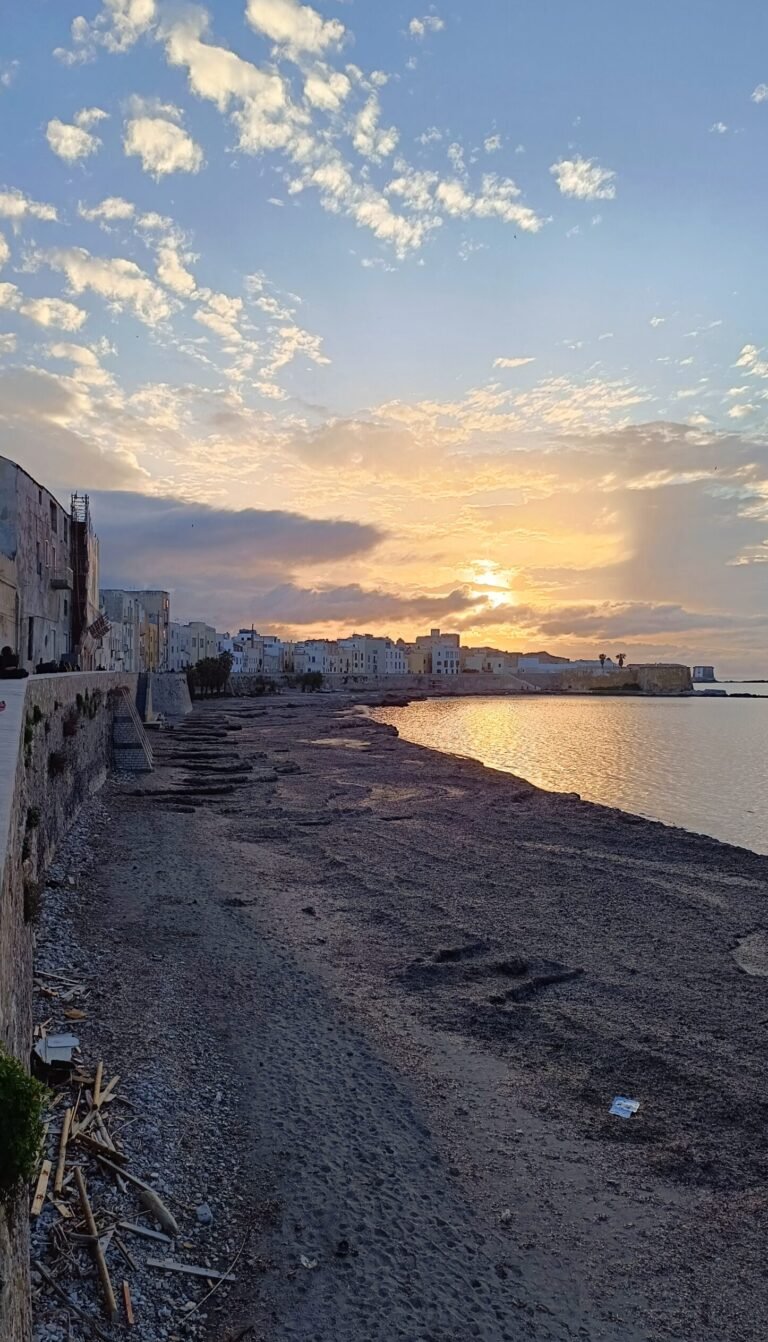Chiang Rai is both a quiet city and a province in northern Thailand, known for its unique temples, relaxed pace, and scenic mountain surroundings. Smaller and less crowded than Chiang Mai, it offers a more laid-back experience and feels like something out of a fairytale. The city is home to remarkable landmarks such as the White Temple (Wat Rong Khun), the Blue Temple (Wat Rong Suea Ten), and Wat Huay Pla Kang, often referred to as the Temple of Mercy.
📖 7 minutes read time
Airport and transfer
Chiang Rai has its own airport, making it easily accessible even from more distant locations. We visited on a day trip via a direct flight from Bangkok’s Don Mueang Airport (DMK). The flight takes just around 1 hour and 20 minutes, giving you enough time to see the most popular sights in a single day. Flights operate frequently throughout the day, offering a surprisingly flexible schedule for such a small airport. To get around, I recommend using Grab, a local ride-hailing app similar to Bolt or Uber, and widely used throughout Southeast Asia.
Whether you’re coming from Bangkok or elsewhere, if you’re short on time or not planning to stay overnight but want to see the incredible, otherworldly temples, it’s definitely possible. You can even make it back home before midnight. Of course, you’ll need a plan, and that’s exactly what this guide is for!
Wat Rong Khun (White Temple)
The star of the show, and most likely the main reason people visit Chiang Rai, is the White Temple. The temple is one of the most iconic and visually striking attractions in Chiang Rai, and all of Thailand. It’s unlike anything I’ve seen before and truly feels out of this world. The temple is part of a larger complex, so plan to spend some time here. Tickets for the entire complex, including the White Temple, cost 100 Baht (~3 EUR) and can be purchased on-site. Since it’s the most popular spot in the area, it gets crowded very quickly. I highly recommend visiting as soon as the gates open, typically at 8:00 AM. The difference in atmosphere, and in the photos, is huge once the crowds arrive.
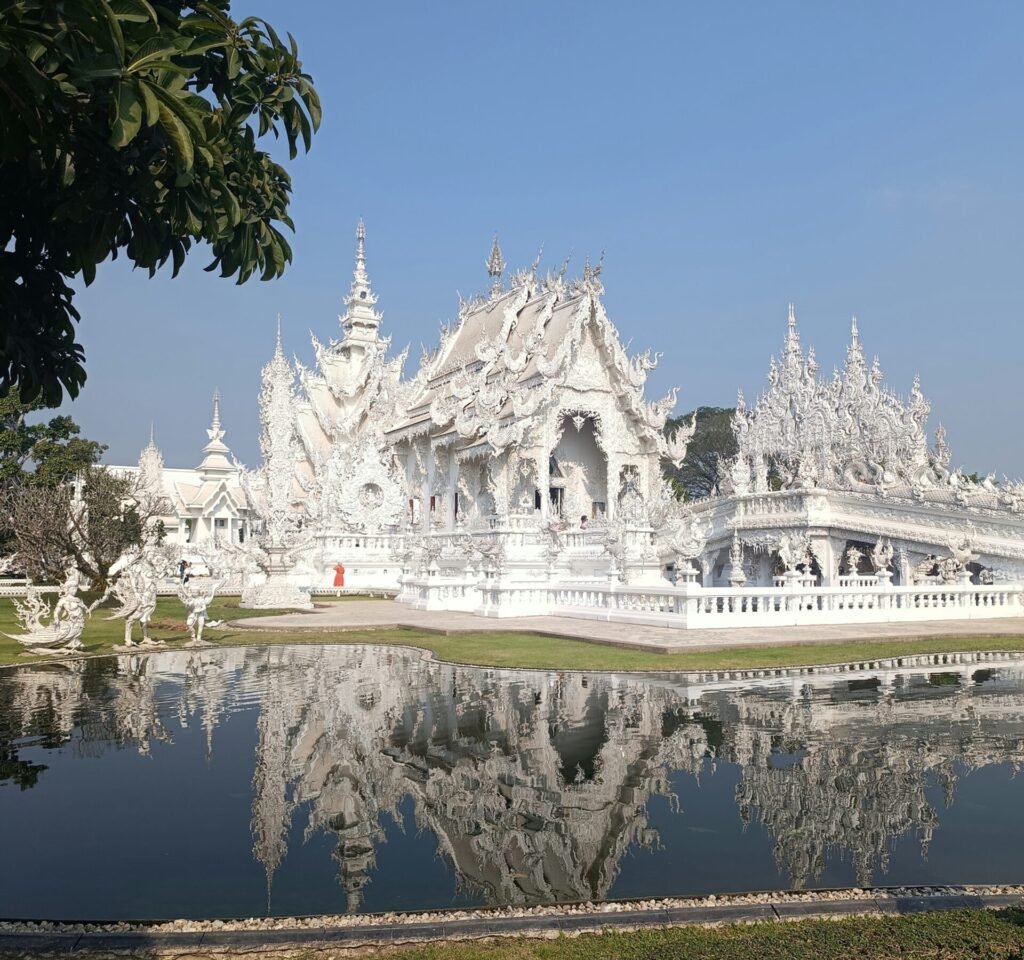
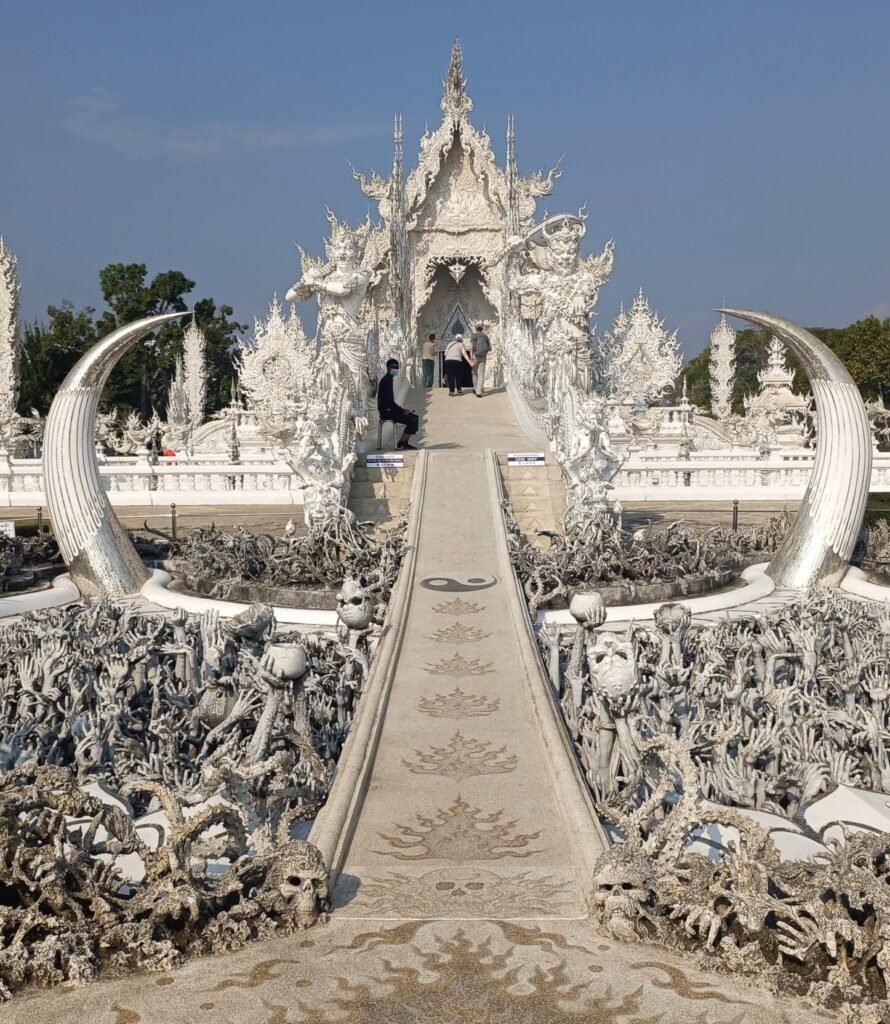
Take your time and really focus on the details while exploring. The temple is a true masterpiece, entirely white to symbolize purity, and decorated with mirrored glass pieces that make it sparkle in the sun. The entrance bridge represents the path from the cycle of rebirth to enlightenment, passing over a pit of reaching hands, symbolizing unrestrained desire. People throw money into it as an act of letting go of their attachments to material wealth.

Wat Rong Khun, or the White Temple, is the creation of renowned Thai artist Chalermchai Kositpipat, who began building it in 1997 using his own funds. He wanted to create a space that blended traditional Buddhist symbolism with modern artistic expression, resulting in a temple that is both deeply spiritual and visually surreal. The White Temple may be the main attraction, but there’s much more art to discover throughout the complex. The golden building below, for example, is a symbolic structure representing materialism.
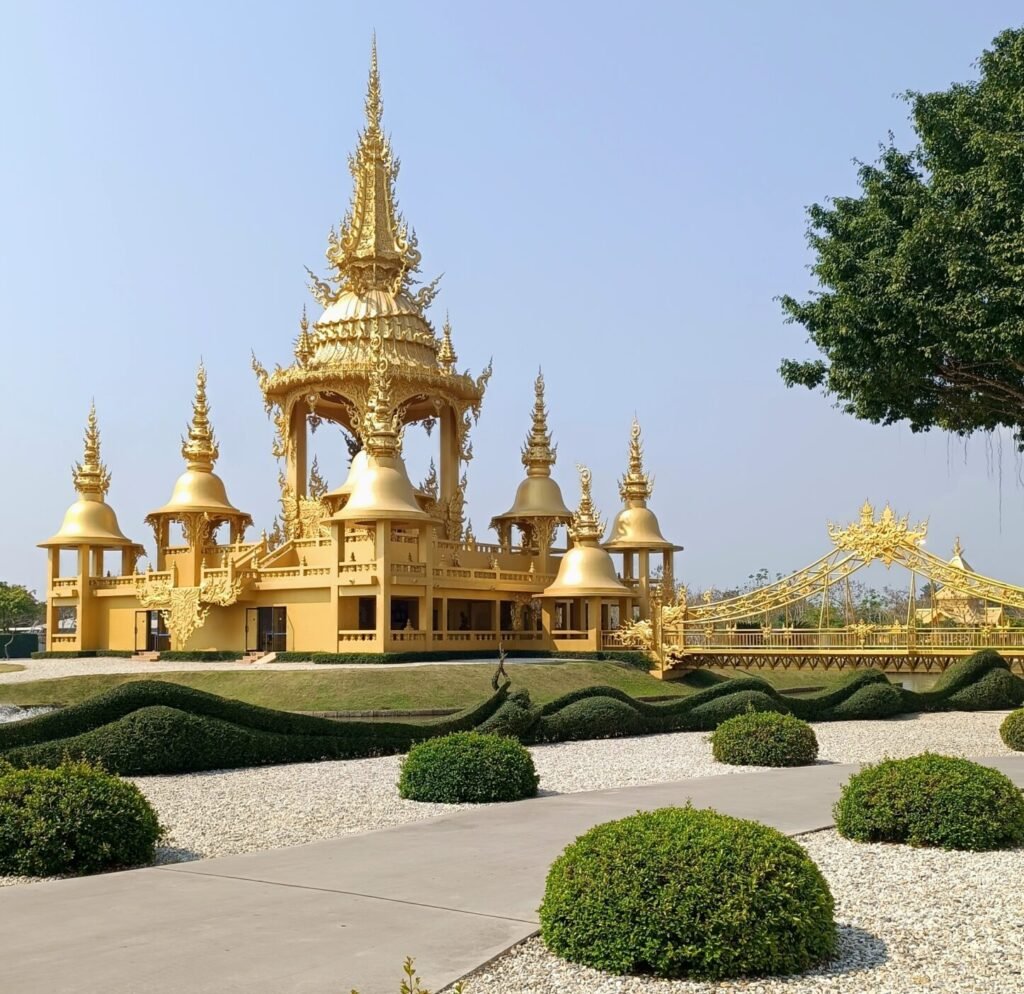
Wat Rong Suea Ten (Blue Temple)
Wat Rong Suea Ten, also known as the Blue Temple, is a stunning modern Buddhist temple located just outside Chiang Rai. Completed in 2016, it was designed by a student of the famous artist behind the White Temple. The temple is famous for its vivid blue color symbolizing wisdom and purity, contrasted by gold accents. The entrance is guarded by majestic dragon-like (naga serpent) statues, leading to a beautifully decorated hall with a large white Buddha at its center.
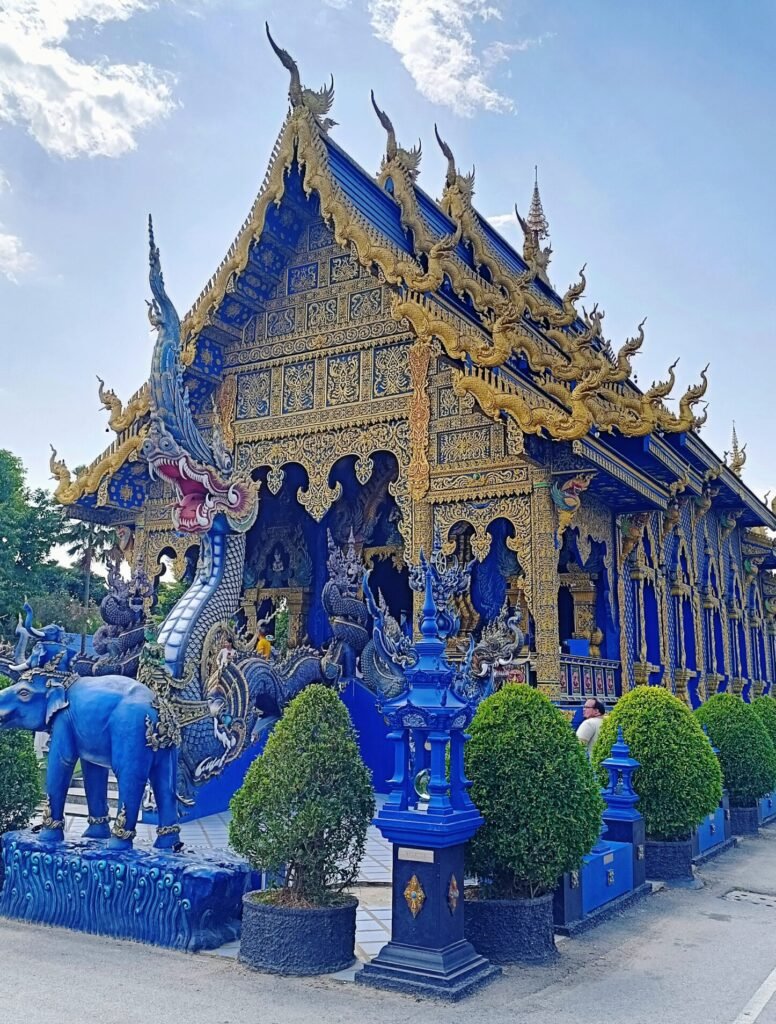
The interior is dominated by a calming blue color scheme. It’s rich in detail and almost a bit psychedelic, much like a portal to another realm. The ceiling features cosmic designs, reflecting on the human existence and the path to enlightenment. If the beauty of the White Temple lies on the outside, then at the Blue Temple, it is undoubtedly found on the inside. From the moment you step in, you are transported into a breathtaking world of color and symbolism.
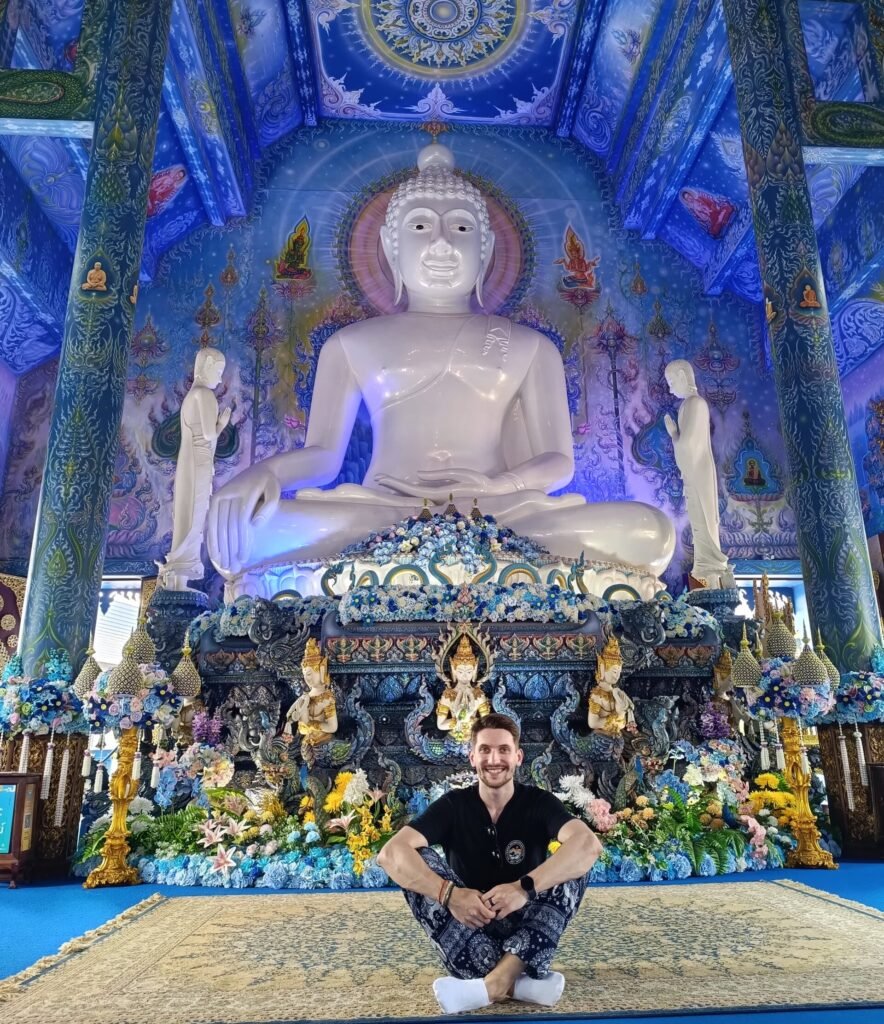
Chivit Thamma Da – Coffee House, Bistro & Bar
Located just a short walk from the Blue Temple is Chivit Thamma Da, a riverside gem in Chiang Rai, offering a blend of relaxed atmosphere and vibrant flavor. Housed in a charming white, colonial-style building situated alongside the Kok River, it includes flowing water features, lush greenery, and multiple seating zones. The vibe of this place is very pleasant and you can choose from sitting in the shaded garden under the trees, or an upstairs terrace perfect for dinners with candles.
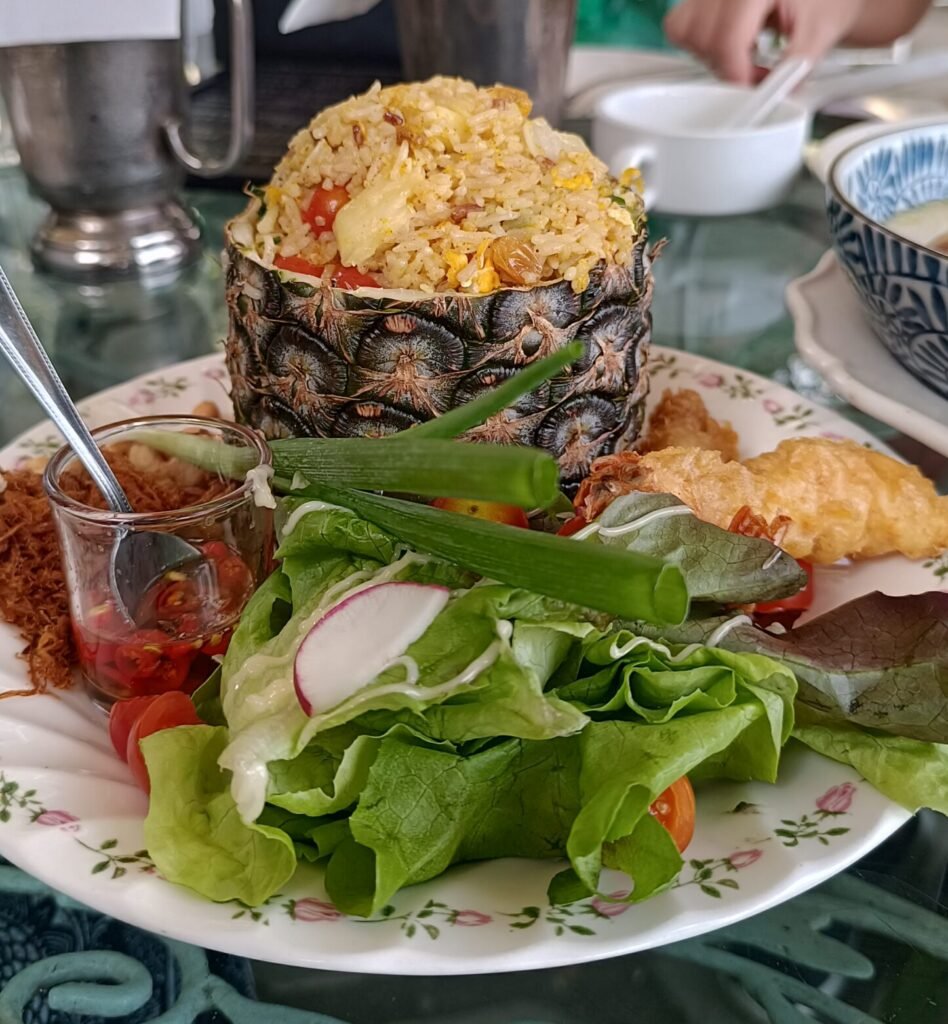
The menu provides a delightful balance between refined international dishes and fresh, locally sourced Thai food options. It is also available on their website at chivitthammada.com. My favorite meal was definitely the Pineapple Fried Rice with Battered Prawn, served in a real pineapple. The combination of sweet pineapple and savory fried rice was truly amazing. I highly recommend stopping by after visiting the Blue Temple, whether for lunch or just a coffee or drink, to relax and recharge before heading to your next destination.
Wat Huay Pla Kang (Temple of Mercy)
Wat Huay Pla Kang, known as the Temple of Mercy, is located on a hill overlooking Chiang Rai with an architectural vision unlike any other in the region. Built in the early 2000s, this modern Buddhist sanctuary uniquely blends Chinese and Northern Thai styles. These can be seen in the vibrant red, gold, green, and white palette and dramatic dragon-guarded staircases.
Adjacent to the temple rises a nine-story pagoda (tower with ascending tiers) capped with a bell-shaped peak. Each tier houses carved sandalwood statues of Buddhas and Chinese spiritual beings. The structure is guarded by golden dragons. They serve not only as decorative guardians but also as spiritual protectors of the temple’s sacred space.
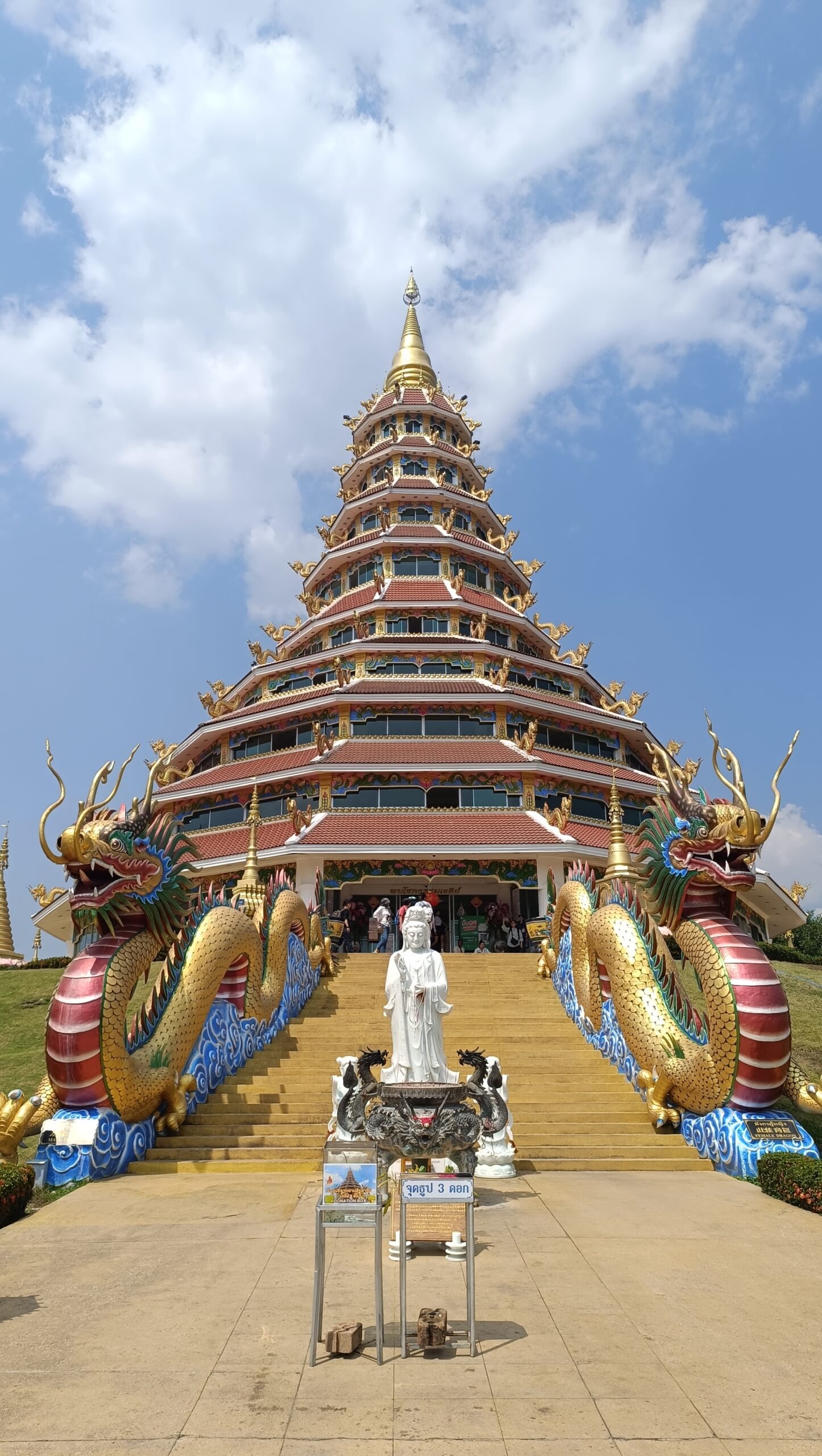
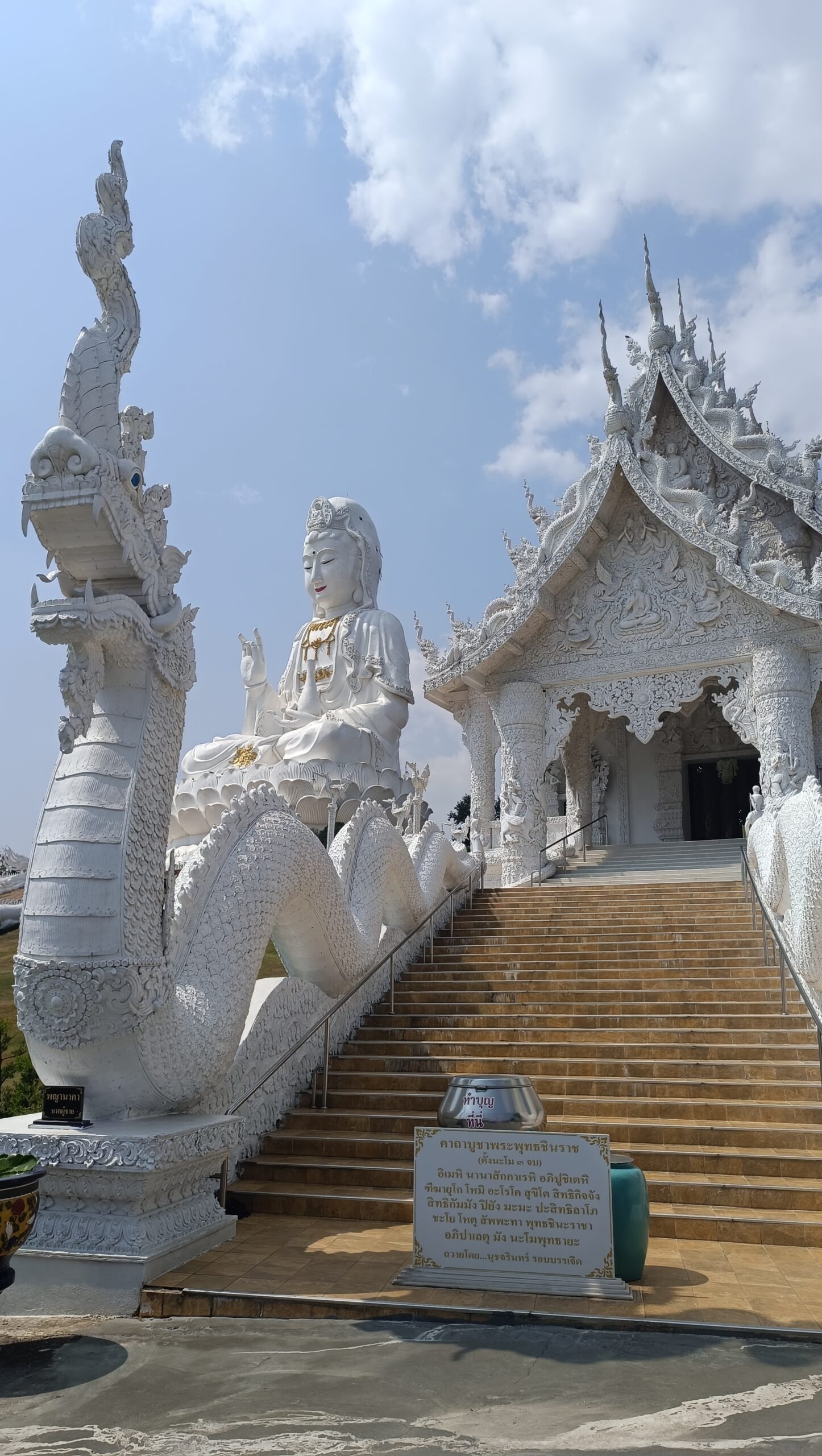
Wat Huay Pla Kang remains less crowded than Chiang Rai’s more famous temples, providing an authentic and more relaxing atmosphere. Considering there are mutliple monumental structures and highlights in one place, practically next to each other, I would highly recommend visiting the area.
Guan Yin statue
At the heart of the temple stands a majestic 69-meter-tall statue of Guan Yin, the Buddhist Goddess of Mercy, a symbol of compassion and kindness. This colossal white statue, which is often mistaken for a Buddha, provides panoramic views over the Chiang Rai area.

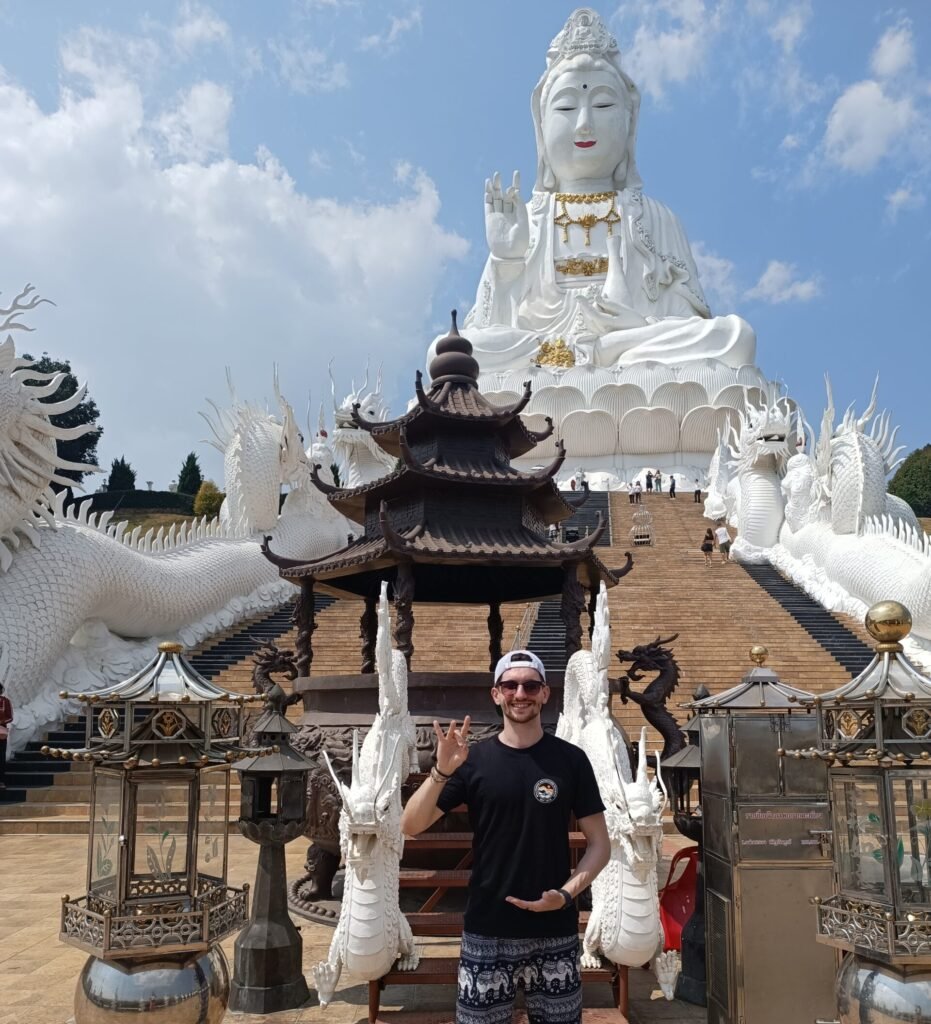
At first, it may seem hard to go up all the stairs to reach the statue, but if you go to a nearby parking lot and wait for a couple of minutes, free shuttle will arrive and take you straight to the top. Once there, you can take an elevator inside Guan Yin to get to the eye level and experience stunning views of rice paddies and distant mountains.
TIP: You can take a free shuttle to reach the ground level of the statue, and then an elevator to the top of the Guan Yin’s head.
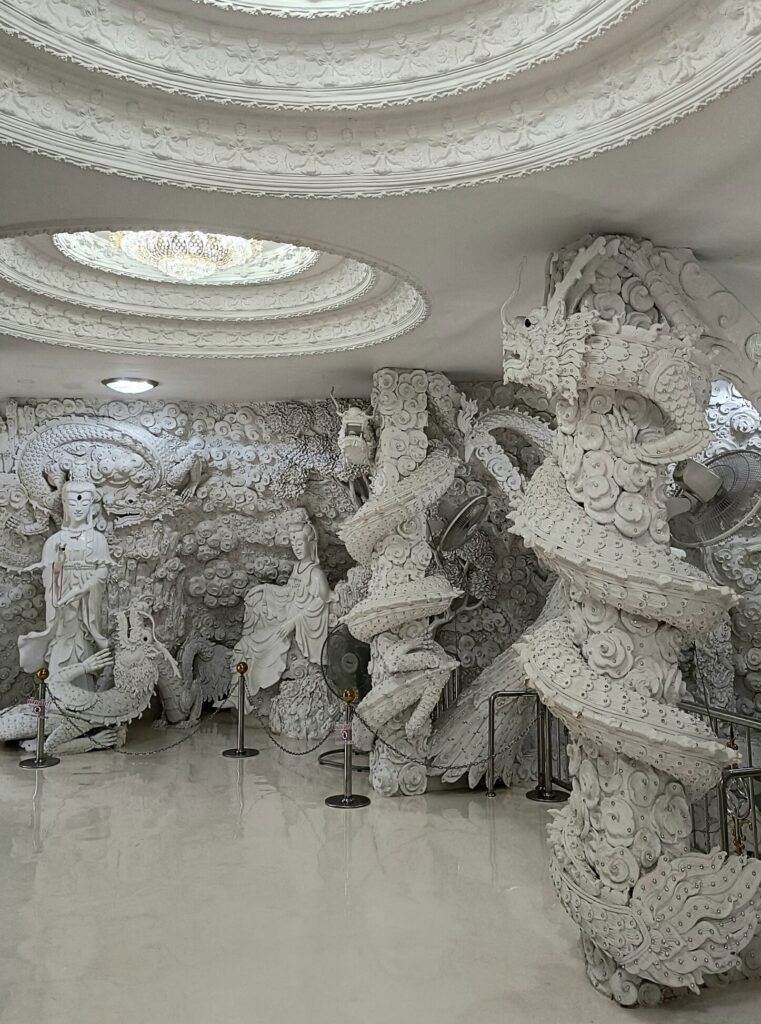
Chiang Rai is a magical place and, to this day, probably the most surreal destination I’ve ever visited. From the incredible temples and peaceful atmosphere to its mix of art, culture, and spirituality, the city offers a truly unique experience. While the major sites can easily be explored in a single day, each one leaves a lasting impression. The airport makes travel in and out simple, offering great flexibility for short or spontaneous trip. Whether you’re visiting as a quick stop or staying longer, Chiang Rai is absolutely worth the journey.




